#ZInat
Explore tagged Tumblr posts
Text
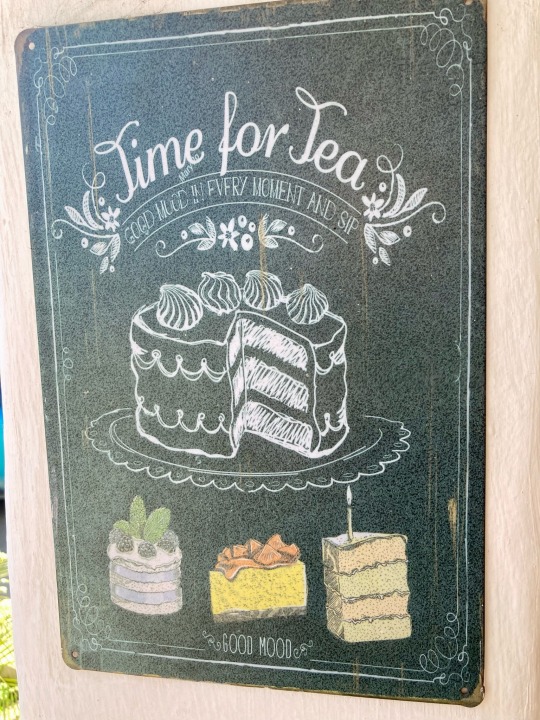
5 notes
·
View notes
Note
Who is your favorite "unknown" mughal princess? By unknown I mean like women like Gauhar Ara begum, Nadira Banu begum, Zinat un nissa begum who were not documented so well.
*laughs*
Anon, that is a dangerous topic to get me started on. I have quite a few (and I'm omitting some of the big names that I also adore: Arjumand Banu, Mihrunissa, Hamida Banu Begum, etc.)
Khanzada Begum- Babur's sister, and--depending on which version you believe--either abandoned or straight up sold to Babur's enemy Shaybani Khan during Babur's escape. But! she wound up surviving both her marriage to the enemy, and returned to her now-victorious brother, subsequently marrying again under happier circumstances and becoming (according to some sources) the first Padishah Begum* of the empire.
*I feel like people often mistranslate this title as "Empress" or "Emperor's favorite wife," but it could just as often mean a beloved sister or daughter--basically, it was the most important woman in the royal family, and the one who effectively claimed the most power.
Gulbadan Begum - half-sister of Humayan, historian, and straight up nerd. Wrote her brother's biography, and delighted in telling embarassing anecdotes about him like any proper sibling. Loving aunt to Akbar; clever, independent, and fun.
Mah Chuchak Begum - widow of Humayan, ruler of Kabul (initially in the name of her son, apparently later just gave up on the pretense and ruled by herself). A hurdle in the path of the young Akbar's consolidation of the empire, she was unfortunately killed by her son-in-law. That said, years later, after her son had managed to piss off Akbar, her daughter Bakht-un-Nissa Begum wound up inheriting the governship of Kabul and apparently did a bang-up job of it.
Aram Banu Begum- Akbar's younger and favorite daughter, and explicitly a smart-aleck. Apparently Did Not get along with her half-brother Jahangir, to the point that one of Akbar's dying wishes was that the two get along. Never married, but seems to have been more a personal choice, rather than a strict decree against it. Seems to have been A Lot, in the best of ways.
Nadira Banu Begum- wife of Dara Shikoh, arguably in one of the happiest marriages of the dynasty. Dara never married anyone, and like her mother-in-law before her, Nadira joined her husband in exile and revolution. He apparently gave most of the paintings he loved to create to her, which is adorable; and did not survive her death by more than a few months.
Dilras Banu Begum - wife of Aurangazeb; apparently haughty and beautiful, and not a little terrifying. Interestingly, she was a devout Shia while Aurangazeb was a devout Sunni (to be fair, Shah Jahan and Mumtaz Mahal were also a very happy Sunni/Shia pair, but both Dilras and Aurangazeb were famously pious and much more religiously fixated than the prior generation). Died before her husband became Emperor, but her children would succeed him.
Zeb-un-nissa (&her siblings) - daughters of Aurangazeb, and talented poets, scholars, and artists. Particularly notable because while pop cultures has the later Mughal empire portrayed as either a joyless husk, or a decadent waste -- these women were clear contraindications to that generalization.
(I could go on, but these are the first few that come to mind!)
38 notes
·
View notes
Photo

Zinat for @coinecai
#art fight#character portrait#illustration#artists on tumblr#illustrators on tumblr#art#digital art#clip studio#csp
9 notes
·
View notes
Text
Journal d’Idrissa SAMBE de la semaine du 21 au 27 juillet 2023. YAKA - Aga biram


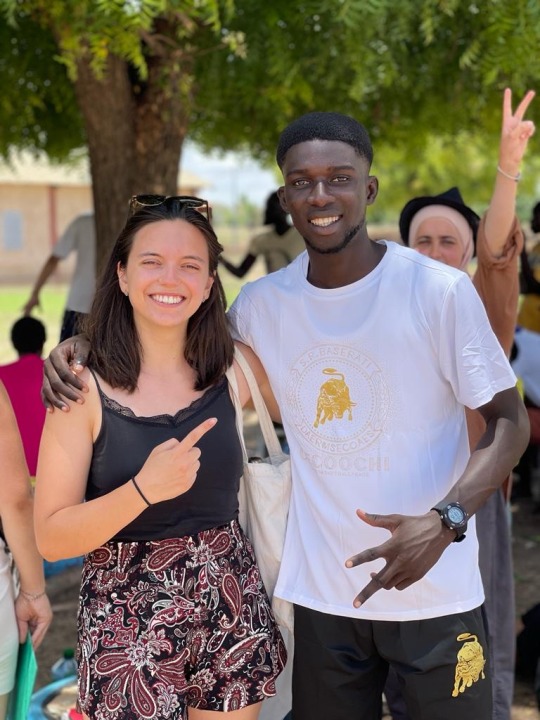
👉Vendredi 21 juillet 2023, c'était mon premier séjour à Aga Biram.
On est parti de Mbour à 9h pour rejoindre ce village.
On est arrivé vers 12h et les villageois nous ont accueillis avec joie et nous souhaitent la bienvenue.
Après avoir rencontré mon jumeau, il m'a amené dans leur maison et j'ai mangé avec eux.
À 15h30, nous nous sommes retrouvés à l'école pour établir notre planning de la semaine.
Je suis retourné chez mon jumeau, là où j'ai passé la nuit dans la chambre des invités avec son fils.
La journée était exceptionnelle.
👉Samedi 22 juillet 2023
Notre deuxième jour à Aga Birame. Je me suis réveillé à 8h, j'ai pris mon bain et mon petit déjeuner. Aussi, je suis sorti de la maison à 9h pour rejoindre les lauréats à l'école pour l'établissement des thèmes sur les deux forums (l'un à Aga Biram et l'autre à Dakar).
On a commencé vers 9h45 par un petit échauffement pour mieux se réveiller.
On a choisi comme thèmes l'environnement, l'amour, la solidarité, la beauté, l'éducation et l'émigration clandestine.
Après avoir pris une pause de 2h30 pour le repas, on est retourné à l'école pour commencer notre premier atelier dirigé par Zinat ayant comme thème la valorisation. On a abordé la thématique sous des formes de théâtre.
On a terminé la journée avec l'atelier de danse dirigé par Mame Mbaye Ndoye et Jean Mané.
La nuit, j'ai rendu visite à Léo qui habite à 500m du village, accompagné par Mame Tafsir et son jumeau.
Je me suis couché tôt pour les autres activités qui suivent.
On a passé une excellente journée où j'ai appris beaucoup de valeurs sur les lauréats.
👉Ce dimanche 23 juillet 2023, notre 3ème jour à Aga Birame.
Ce matin, vers 10h, on s'est regroupés dans la cour de l'école. On a discuté de nos différents thèmes du forum et échangé beaucoup d'idées. Ensuite, on a créé des petits groupes pour la visite des familles dans chaque quartier. On s'est amusés en dansant. L'activité s'est terminée vers 13h30. Je suis retourné à la maison pour mon repas. Ensuite, je me suis reposé pour être en forme pour l'activité qui suivait.
À 16h, on s'est rassemblés dans l'école avec le comité d'Aga Biram pour le projet de la boutique solidaire.
On a discuté du projet et j'ai posé des questions pour connaître leurs fournisseurs.
À 17h, on a fait le tour des familles par groupe sous des tirages.
Notre groupe a pris le quartier de Sassene qui se trouve près d'un kilomètre de l'école. On a pris le chemin et on a rencontré des paysans qui labouraient leurs champs.
On est retournés à l'école vers 18h et sommes allés aussi vers le quartier Soudiane pour visiter la boutique solidaire.
On a terminé les activités avec une petite séance d'animation avec les enfants du village.
Je suis retourné à la maison avec les habitants de mon quartier. La nuit, vers 22h, je suis allé chez Noémi pour jouer à des jeux de société.
Je suis rentré chez moi vers 23h avec mon ami Tamsir.
Wah, quelle journée avec les lauréats !
👉Ce lundi, 24 juillet 2023 notre 4éme jours à Aga Biram.
Je me suis réveillé à 7h53, j'ai pris mon bain et salué toute la famille.
On a servi le petit déjeuner qui est du couscous et du lait chaud.
J'ai marché pour rejoindre les lauréats à l'école vers 10h. On a commencé l'activité avec un petit échauffement pour réveiller le corps, dirigé par moi-même.
Ibrahima et Coumba ont donné un cours de sérère pour nous de 11h jusqu'à 12h30.
Ensuite, nous nous sommes rassemblés pour continuer les discussions pour le forum et on a divisé le groupe en 4 parties pour chaque thème. Moi, j'ai pris le thème de l'environnement et j'ai beaucoup parlé de l'environnement par rapport à l'échauffement climatique. La question était : comment faire pour que les maisons soient adaptées à la chaleur.
On a pris une pause pour aller prendre notre déjeuner. J'ai mangé mon plat préféré avec Youri dans ma maison et on s'est retrouvés à 16h. L'atelier du soir portait sur des dessins pour qu'on décore la boutique communautaire d'Aga Biram.
On est rentré dans la salle à cause de la pluie.
J'ai dessiné sur une petite boue de papier des bouteilles d'eau, d'huile, un sac de riz 🍚, etc.
L'atelier s'est terminé vers 18h et on a discuté des pépites et des cailloux. Et la pluie continuait.
Je suis retourné à la maison vers 19h en marchant sous la pluie. J'ai pris le repas, puis je me suis couché tôt à cause de la pluie. Journée exceptionnelle avec les lauréats.
👉Ce mardi 25 juillet 2023 5eme jours à Aga Biram.
Je me suis réveillé tard à cause de la pluie d'hier et j'ai pris mon petit déjeuner avec précipitation.
J'ai quitté la maison vers 10h20, j'ai retrouvé les lauréats à l'école pour qu'on continue notre atelier du forum. On a échangé beaucoup de choses et finalement on a établi notre plan pour le forum.
C'était moi aussi qui dirigeait les ateliers de la journée.
L'après-midi, vers 16h, on s'est regroupés pour terminer le programme de la journée avec une séance de Fitness dirigée par moi-même.
J'ai joué au football avec les lauréats et les habitants du village.
On s'est rassemblés pour faire un petit feedback de la journée.
Je suis retourné chez moi et j'ai pris mon bain.
Comme ce mercredi, on doit partir à Saly pour notre première sortie du voyage.
Une journée où j'ai appris beaucoup de choses.
👉Mercredi 26 juillet 2023 mon 6em jour à Aga Biram
Je me suis réveillé à 6h00 pour préparer la sortie à Saly.
On s'est retrouvés à l'école, on a pris les charrettes pour aller à Sandiara où on va prendre le bus pour aller à Saly.
Vers 8h, le bus quitte Sandiara pour aller à Saly.
Sur la route, on a trouvé des ânes, des arbres et il n'y a pas beaucoup de maisons.
On est arrivé vers 9h sur la plage de Safari beach et on a été bien accueillis par les gens qui étaient sur place.
On s'est déshabillés pour entrer dans la mer et se baigner. Moi et d'autres lauréats sommes allés prendre le petit déjeuner au restaurant Safari, puis on s'est baignés dans la piscine.
On est retournés au groupe et on a joué au jeu UNO.
Je suis retourné à la mer pour me baigner encore vers 12h.
Vers 14h, on est allé au restaurant chez Aby pour prendre le déjeuner et j'ai mangé un bon yassa poulet avec les lauréats.
On est retournés à la plage vers 15h, on s'est encore baignés et on a joué ensemble.
Vers 17h, on a pris la route vers Aga Birame.
On est arrivés à 20h.
Je me suis couché vers 23h.
J'ai passé une excellente journée à Saly avec mes amis lauréats.
👉Jeudi 27 juillet mon 7eme jour à Aga Biram
Je me suis réveillé à 7h et j'ai regardé des films sur mon ordinateur.
J'ai pris mon bain et mon petit déjeuner vers 9h, puis j'ai retrouvé les lauréats à l'école vers 10h pour aller peindre la boutique communautaire d'Aga Birame.
On a discuté des dessins qu'on va faire sur les 3 façades et divisé le groupe en 2 parties : l'une pour l'organisation et les autres pour la peinture.
À 13h30, on a pris une petite pause pour le déjeuner.
On est retourné à 16h pour continuer notre travail, en même temps on a discuté de nos staffs référés sur ce qu'on vit dans nos familles et dans le village.
J'ai passé une excellente semaine avec les lauréats et les staffs.
Merci à tous.
3 notes
·
View notes
Text
Important to have each success and criticism: Diana Penty on ‘Chhaava’
Important to have each success and criticism: Diana Penty on 'Chhaava' Mumbai, Actor Diana Penty, who performed a Mughal princess in "Chhaava", a movie that was a field workplace hit but additionally acquired backlash for its depiction of sure historic occasions, says you will need to have each success and criticism for artists to develop. Important to have each success and criticism: Diana Penty on 'Chhaava' The motion drama, based mostly on the lifetime of Chhatrapati Sambhaji Maharaj performed by Vicky Kaushal turned the highest-grossing Hindi movie this yr by incomes over Rs. 600 crores on the field workplace in India after its launch in February. "I believe that is the case with all movies the place all people has blended opinions, some prefer it, some don’t, to every their very own. Like, I may not stroll right into a theatre and just like the movie that I'm watching, however that does not imply that it isn't movie or that it will not discover its viewers. "It's essential to have each side in order that actors or makers can do higher the subsequent time or change sure issues. Every time I watch a movie that I've executed earlier than, I'm like, I might have executed that higher. I'm an enormous critic of my work,” Penty, whose newest work is “Detective Sherdill”, informed PTI in an interview. In “Chhaava”, the 39-year-old actor performed the position of Zinat-un-Nissa Begum, the second daughter of Emperor Aurangzeb. Penty stated there have been individuals who preferred her portrayal after which there have been some who did not. "But for me, what I preferred about this character was that I had little or no to say, and that gave me one other problem. There was a lot energy within the silences, and that is not simple to do. There are lots of inner emotional ideas and emotions that you simply need to present with out phrases. It will not be one thing I had executed earlier than. So, I appeared on the constructive aspect of it,” Penty, who has garnered reward for her work in movies like “Cocktail”, “Happy Bhag Jayegi”, and “Parmanu”, stated. The actor stated she feels blessed to be a part of a film like “Chhaava”, which introduced historic narratives to modern audiences. “It was an fascinating script from the standpoint of simply telling our historical past. We had realized it in highschool, which was being represented on display screen. It was one thing that I needed to be a part of. Working with Maddock, with whom I began my journey, is particular, and I needed to work with Laxman , sir," she stated. Penty has a slew of fascinating tasks within the pipeline, together with net sequence “Daring Partners”, with Tamannaah Bhatia and Nakuul Mehta and a thriller drama movie “Section 84”, co-starring Amitabh Bachchan, Nimrat Kaur and Abhishek Banerjee. The actor is most enthusiastic about her collaboration with Bachchan on “Section 84” and described the expertise of working with him as “unbelievable.” “It really was a masterclass watching him in motion. It was a type of movies the place, since you had been reverse such a positive actor, your efficiency mechanically improved. Like, being in that second and simply reacting to the individual in entrance of you, and when he's that individual, it simply offers you a lot extra to play with and watch the best way he brings nuances, and it is simply so actual." “Detective Sherdill” is produced by Ali Abbas Zafar and Himanshu Mehra, and directed by debutant Ravi Chhabriya. It was launched on Friday on ZEE5. The movie additionally options Diljit Dosanjh, Banita Sandhu, Sumeet Vyas, and Chunky Pandey amongst others. This article was generated from an automatic information company feed with out modifications to textual content. Read More: https://news.unicaus.in/entertainment/bollywood/important-to-have-each-success-and-criticism-diana-penty-on-chhaava/
0 notes
Text
Twitter autenthification
Tipa RIgas stacijaa lidoju apkart. nosezhos uz viena staba, tipa kaa putns apmeram, bet augsts stabs. b;akus vel kkas nolaizhas, ari lidosjosh. es saku, ka tas esmu es, ar to domajot, ka twiterii verification tests tiek veikts. tas otrs taka to pienjem un es laizhos talak, nolaizhos no staba , pa vejam saku celties augstaak, paceljos ljoti augstu, sen tik augstu nebiju bijis, skats uz leju tads, ka var redzet pilsetas vairakas vienalikus. augshaa sak pust veejsh un ljoti liela atrumaa puush uz kkadu pusi, kur nomainas skats lejaa tik ljoti, ka ir skaidr,s ka atpakalj tikt nebus vienakrshi. es nolaizhos kkur pie Daugavas via kkadas upes, krastaa ir veca pilseta ar majam un zhogiem, es megjinu pa krastu uzrapties lidz augstakajam punktam lai varetu zinat, kuz kuru pusi kur doties. jalien pari veu kraamu tipa metalluzhnju kaudzei. no kreisas puses nak klat kkads tips melniem matiem un ar bardu man liekas, tada hipija paskataa. vinjh tipa sarga to kaudzi un neljauj man list pari. es saku, ka ahah, taisies mani nelaist talak ja?
0 notes
Text
In the world of fashion, few styles are as enduring and elegant as Gota Patti Kurtis. At Saibo Lifestyle, we bring this traditional art form into modern-day fashion, offering a stunning collection of Gota Patti Kurtis that effortlessly combine intricate craftsmanship with contemporary flair. Whether you’re preparing for a grand celebration, a casual gathering, or a festive occasion, Gota Patti Kurtis are versatile pieces that add an air of sophistication and elegance to your wardrobe.
0 notes
Photo

Zinat is a friendly handwritten font with whimsical and quirky charm, perfect for adding brightness to designs and creating lovable results in various projects.
Link: https://l.dailyfont.com/Cv9PX
#aff#love#smile#handwritten#friendship#whimsy#quirky#bright#design#font#typography#creativity#inspiration#beauty#funny#cute#adorable#playful#creative
0 notes
Text
Saidi Balogun Mourns the Tragic Loss of His Daughter, Zinat"
Screenshot Nigerian actor and filmmaker Saidi Balogun has been struck by a heartbreaking tragedy with the sudden passing of his daughter, Zinat. The devastating news reached the veteran actor on Friday, just as he was preparing for his second stage performance at Terra Kulture in Lagos. Zinat, Saidi’s first child from his previous marriage to Sherifat, has left a deep void in the hearts of her…

View On WordPress
0 notes
Text
Role of Muslims in India’s Freedom Struggle
The famous writer kushwant Singh,once write “ India freedom is written in Muslim blood ,since their participation in the freedom struggle was much more,in proportion to their small percentage of the population “The story and history of Indian's independence are written with the blood of Muslims. According to historical references 65%of those who stood , fought and sacrificed against the British for Indian's independence were Muslim freedom fighters,the hams live reported. Indian Muslims not only contributed significantly to the liberation struggle but also gave their lives in the service of the anti-colonial national battle. 61945 of the 95300 names of independence fighters mentioned on India Gate in Delhi are Muslim names, indicating that 65% of all liberation fighters were Muslims, as reported in an article in Milli Chronicle.
A large number of people from all religions and castes took part I the freedom struggle, undoubtedly. Muslim however , the struggle of many Muslim prominent personalities who also contributed to India's freedom and even sacrificed everything including their lives are little known . Muslim have been at the forefront to oppose the British and stood shoulder with people from other commitments while fighting against them. Getting freedom was not easy ,our ancestors had to go face a lot of struggle and difficulties to get us the freedom that we are enjoying now.
It is impossible to recount the names of hundreds and thousands of Indian Muslims who fought on the streets against the British empire.For all patriotic Indians, it is the worst of times, it is the age of foolishness, it is the epoch of incredulity, it is the season of darkness, it is the winter of despair, we have nothing before us, to paraphrase an epic description of the revolutionary tumult of the French Revolution, by Charles Dickens in his novel The Tale of Two Cities. However, the current situation in India is not about a revolutionary tide. The torrents that India faces today are intensely counter-revolutionary.Even a cursory glance at history would reveal that Indian Muslims not only played a stellar role in the freedom struggle but happily laid down their lives at the altar of the anti-colonial national struggle.The Great Revolt of 1857 was the mightiest joint effort of the Hindus and Muslims under the leadership of the Mughal emperor Bahadur Shah Zafar to dislodge the British from India. Zafar was chosen as the leader of the Revolt by the overwhelmingly Hindu upper-caste sepoys (popularly known as poorbeahs) recruited chiefly from the Eastern regions of India. Although the Revolt failed because of myriad reasons, it was the Muslim community that was singled out by the British as the conspirators-in-chief. The tragedy that struck the Muslims of Delhi, which was the epicentre of the Revolt, was gruesome and ghastly.
All Muslims, barring a few rich households, were shunted out of the walled city and could not return to the city till November 1859. Important Muslim shrines were desecrated by the British as an insulting token of revenge. There was a talk of demolishing the Jama Masjid, the Akbarabadi Masjid was destroyed, the Fatehpuri Masjid was sold to the pro-British Lala Chunna Mal and the Zinat-ul-Masjid was used as a bakery. After the embers of the Revolt cooled, the British became aware of a conjoint effort by Hindus and Muslims motivated by a common anti-British sentiment in future. As a result, the system of mixed regiments in the British army was disbanded and replaced by the 'class company model' of mixed ethnic groups.
In the next phase of British rule, a small number of rich and educated Indians were given consultative yet impotent memberships in the Legislative Councils. The Bengal Legislative Council that came into being in 1862 had four members: Raja Partap Chand of Burdwan, Ramaprasad Roy, son of Rammohun Roy, Prasanna Coomar Tagore, cousin of Dwarkanath Tagore, and a lone Muslim member Maulvi Abdul Latif. From the very beginning, the Council fell prey to the interests of the bourgeoisie-landlord combine.
One of the first tasks that the Council set itself to was to bring about a bill that strived to amend Article X of the Tenancy Act of Bengal 1859, under which the poor Bengali tenantry and sharecroppers got some relief from exorbitant exactions by the 'permanently settled' landlords. Out of all the four Council members, it was only Maulana Abdul Latif who voted against the egregious bill and the rest sided with the British planters.Within two years of the founding of the Indian National Congress (INC) in 1885, Badruddin Tyabji of Bombay became its President. Both Badruddin and his brother Qamruddin Tyabji were deeply involved in laying the founding of the INC and were among the four Muslim delegates elected to the first Congress meeting in 1885. It is also interesting to note that Badruddin Tyabji was instrumental in passing the motion that stated that the ‘INC would never approve the discussion of a subject without the unanimity of its Hindu and Muslim delegates’.
Even during the Swadeshi period, Muslim swadeshi leaders were as patriotic as their Hindu brethren. If we set aside the dubious role of prominent landed elements such as Nawab Salimullah of Dacca, we will find immense participation of ordinary and plebian Muslims. The Muslim peasantry of Pabna and Khulna displayed heart-warming scenes of fraternisation during a rally in July 1905. In the same year, on September 23, Hindu-Muslim students of Calcutta marched in unison and organised a ten thousand-strong rally where the Muslim swadeshi Abdur Rasul declared, ‘‘We both Hindus and Mohammadans here belong to the same mother country—Bengal.’’
In Hooghly, the calls of Bande Mataram and Allah-ho-Akbar mingled. Muslim Swadeshi enterprises such as Ghaznavi’sUnited Bengal Company, the Bengal hosiery, and the Bengal Steam Navigation Company played a vital role during the movement. Abul Hussain and Liakat Ali were extremely prominent agitators during the great East India Railway strike of 1906. During the strike, the Muslim locomotive drivers took pledges on the Koran and walked out in their turn in December 1907. The strike went on till the middle of February and was only broken with the help of European drivers loaned from the army.
After the First World War, when the era of mass politics was inaugurated in India, Muslims were not at all lacking in participation. The resolution for complete independence (Poorna Swaraj) was first moved at the 1921 Ahmedabad session of the Indian National Congress by Maulana Hasrat Mohanialong with Swami Kumarananda of the Communist Party of India. B.T. Ranadive records in his article India’s Freedom Struggle published in the journal Social Scientist that ‘‘it was Gandhi who led the opposition to it’’. Similarly, in June 1922, a joint session ofthe Khilafat Committee and Jamiat-ul-Ulema held at Lucknow passed a radical resolution that stated, “The best interests of India and the Muslims demand that in the Congress creed the term 'Swaraj' be substituted by the term 'Complete Independence’’. It should be remembered that the Indian National Congress adopted the complete independence resolution only in December 1929.
The nucleus of the Communist Party of India formed in Tashkent in 1920 consisted mainly of Muslim hijratis who left the fold of the foundering Ottoman Caliphate and made socio-economic emancipation of the Indian masses their goal. Therefore, some of the early Muslim communists went against the euphoria of the age and posed difficult and far-sighted questions to the leadership of Congress. Muzaffar Ahmad, fondly known as Kakababu, was one of the most dedicated members of the Communist Party of India, questioned the concept of Hindu-Muslim unity on the grounds that the leaders who forged this alliance erroneously assumed that the interest of the ordinary people could only be expressed in the idiom of religion.
He implicated the leaders of such movements of dividing the people into communal lines and creating a mentality of communal separation (sampradayik bhedbuddhi), despite the call for communal unity, precisely because of the singular premium put on religious identities and leaving other considerations such as their class and relation to the means of production, out of the question. Kakababu also grasped the class question behind the communalisation of politics.
He argued that communalism from above was a double-edged strategy of the ruling and possessing classes aimed at maximising the internal bargaining position of various upper-class factions while weakening the collective bargaining power of the poor, as the latter responded to communal politics only because they faced dispossession and deprivation in the then existing situation.
This latter point makes Kakababu’swarning extremely relevant for today’s India.
Within the Congress, there was no dearth of tall, and in the case of the great Khan Abdul Ghaffar Khan, literally ‘tall’ Muslim leaders. In September 1926, Khan established the Khudai Khitmatgars, an overwhelmingly Pashtun corps whose membership was open to Hindus, Christians, and Sikhs. The members were also called Red Shirts, but unlike the fascist Black Shirts and the Rashtriya Swayamsevak Sangh White Shirts of today, they did not carry a weapon, not even a lathi. They only spread the message of peace, unity, and non-violence.
It was during the salt march that Khan became most proactive. His subsequent arrest led to the killing of two to three hundred Khudai Khitmatgars. The violence led him to adopt the creed of non-violence in toto. On Gandhi’s call, he went to Bardoli, where he linked non-violence to Islam. Maulana Abul Kalam Azad remained one of the chief Muslim leaders of the anti-colonial nationalist movement whilst working within the Congress. At 35, he served as the youngest President of the Indian National Congress in 1923. Along with this, he was made to suffer multiple incarceration terms by the colonial state.Even the revolutionary movement of India is adorned by the figure of Shaheed Ashfaqullah Khan, who gave up his life whilst being a member of the Hindustan Republican Association (HRA) for the cause of India’s freedom.
To conclude, it is impossible to recount the names of hundreds and thousands of Indian Muslims who fought on the streets against the British empire. The patriotic slogan of Jai Hind was popularised by Zain-ul-Abideenalias Abid Hasanwho was a close associate of Netaji Subhash Chandra Bose and an officer of the Indian National Army (INA).

0 notes
Text

2 notes
·
View notes
Text
Från trakten
Från trakten (Serie 2023) #FatimaJelassi #HampusHedstrom #JohanOstling #HelenaLindegren #CharleenElea #AlbinOlsson Mehr auf:
Serie Jahr: 2023- (Mai) Genre: Comedy Hauptrollen: Fatima Jelassi, Hampus Hedström, Johan Östling, Helena Lindegren, Charleen Elea, Albin Olsson, Yasmine Seifi, Henriette Valsö, Zinat Pirzadeh, Tobias Skogman, Lucas Grimstedt, Fernando Lucumí Carabalí, Maja Lagerkvist … Serienbeschreibung: Die Teenager-Waise Zeina muss ihre Nachbarschaft in der Vorstadt verlassen und in ein Pflegeheim auf dem…

View On WordPress
0 notes
Text
1948, 05, 15 Israel attacks a village
A Map of Omm Umm al-Zinat Before Nakba Women and children were already moved out in early May. On May 14, three men from Ein HaEmek settlement warned the others in Umm Az-Zeynat that Haganah forces were getting ready to come in and pressure them to leave. Some ran away, while others chose to stay. Umm Al-Zeinat in the Haifa subdistrict was attacked by Golani Brigade’s Fouth Battalion, and the…
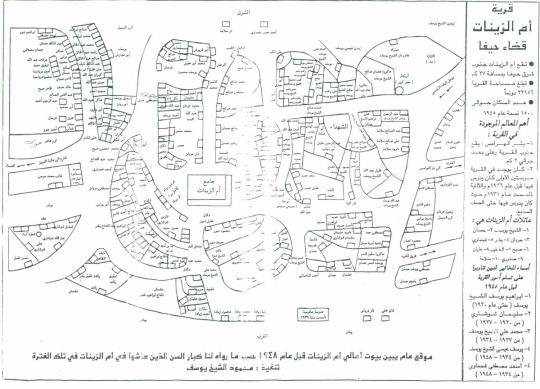
View On WordPress
0 notes
Text
Zinat
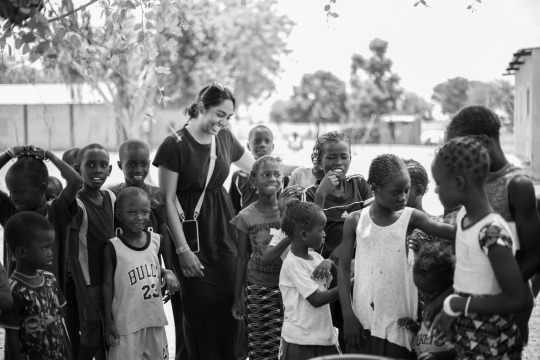
Jour 1 : jeudi
Assise dans l’avion en direction du Sénégal, j’ai encore du mal à réaliser la folle aventure dans laquelle je me suis lancée en rejoignant YAKA. Je rattrape mon sommeil dans l’avion car les jours avant le départ étaient assez sportifs. On arrive à l’aéroport de Diass, en sortant la chaleur humide du pays nous attrape et ne nous lâche pas, jusqu’à ce qu’on se retrouve à rouler dans le minibus qui laisse le vent venir nous caresser le visage. Après s’être arrêté pour un petit encas, on rejoint l’école à Mbour pour cette première nuit au Sénégal où on rencontre nos collègues dakarois.
Jour 2 : vendredi
On se réveille dans la bonne ambiance entre playbacks, danse et jeux de ballon, puis direction le village d’Aga Biram où nous allons effectuer nos trois semaines d’immersion. Notre minibus arrive dans le village, on est accueilli par les jeunes et les enfants du village, tous avec un énorme sourire et des visages rayonnants. Pendant le temps d’attente, on échange comme on peut avec les enfants et on joue à des jeux avec eux. On rencontre ensuite nos jumeaux qui nous accompagnent dans nos familles d’accueil. Je découvre mon nouveau chez moi, et les nouveaux membres de ma famille. Les échanges sont très chaleureux.
Jour 3 : samedi
Après ces quelques premières heures passées au sein de ma famille, je commence petit à petit à comprendre les us et coutumes du quotidien. Première matinée de travail, on construit le planning de la semaine, qui comprend des temps d’interconnaissance, des ateliers mais aussi des temps d’organisation et de bilan. Je m’étais portée volontaire pour lancer le premier atelier qui portait sur la valorisation de soi. Il s’est super bien passé, et c’était aussi un temps qui nous a permis d’apprendre à nous connaître plus en profondeur car on parlait de sujets plus profonds comme nos échecs et nos réussites. On a fini la journée en beauté avec un atelier danse avec les enfants du village, mené par deux lauréats dakarois.
Jour 4 : dimanche
A part le fait que je n’arrive toujours pas à finir les plats, je continue à apprendre à connaître ma famille et les villageois, tout en dépassant ma peur des insectes (je suis agréablement surprise par ma capacité à garder un tel sang-froid). Premier temps de la semaine dédié à la préparation de notre forum à Dakar. On réfléchit aux thématiques qui peuvent nous intéresser et on vote, avec les enfants qu’on a inclu dans le processus de manière plus ou moins improvisée. Il en ressort 4 thématiques qui vont guider tout le travail à venir : l’éducation, l’émigration clandestine, l’environnement et l’amour/la solidarité/la beauté. L’après-midi, nous avons effectué un jeu de piste avec des indices qui nous permettaient de trouver les familles des lauréats qui n’habitent pas dans notre hameau. Cette balade champêtre avec mes voisins était remplie de rencontres, chants, rires et fou rires, et s’est terminée sur un coucher de soleil en plein milieu des champs, ce fut mémorable.
Jour 5 : lundi
On commence la journée avec un ice-breaker comme souvent, puis on se dirige vers la salle de classe pour commencer le cours pratique de Serrere. Je repars un peu plus armée pour communiquer avec les villageois. Ensuite, on s’installe en cercle pour creuser les thématiques avec les villageois présents. On partage nos différents points de vue, l’échange était hyper riche et intéressant. Ça m’a tellement inspiré que j’ai réfléchi à un projet d’exposition qui permettrait de restituer notre travail sur ces thématiques et de partager au grand public les différents points de vue. L’après-midi on démarre par une réunion avec le comité des jeunes du village pour discuter des enjeux de l’ouverture de la boutique communautaire portée par les associations Samaane et YAKA. Nos prochaines étapes : dessiner les croquis pour la fresque de la boutique, faire les schémas puis peindre les façades, et préparer l’événement d’inauguration de la boutique.
Jour 6 : mardi
On commence la matinée avec la préparation du forum, on se répartit par groupe thématique de manière assez naturelle et équilibrée entre Français et Dakarois. On définit notre sujet et nos prochaines étapes pour le forum, puis on en discute en plénière. Ça fait plaisir de pouvoir se projeter un peu plus et d’entamer un travail de fond. L’après-midi, on se lance dans une séance bien sportive menée par un lauréat sénégalais qui est professeur d’EPS. On fait du renforcement musculaire tout en rythme avec la musique, puis du rugby et enfin, un bon match de foot avec les villageois qui se termine sur un beau coucher de soleil (mon équipe a gagné en plus hehe). I n o u b l i a b l e !
Jour 7 : mercredi
C’est le jour de la sortie à Saly. Réveil matinal pour un RDV à 6h30 afin de démarrer à temps en charrette. Première fois en charrette, on était installés avec une belle équipe pour le trajet. Bon, le cheval était fatigué, donc tout le monde nous a dépassés, mais on est arrivés à temps à Sandiara. Le trajet pour aller jusqu’à Saly était bien animé avec toutes sortes de chansons. J’étais très contente car mon jumeau Ngor est venu passer la journée avec nous. J’ai également pu échanger avec d’autres Sénégalais du comité de jeunes qui étaient venus avec nous. On a bien profité de la plage, mon jumeau m’a aussi appris à faire du thé (ici, on dit « tchayné »). On a aussi fait une petite choré tiktok avec quelques lauréats. On a ensuite mangé au restaurant, avant de revenir se poser à la plage. Avec certains, on s’est posés sur une terrasse et j’ai pris un jus d’orange pressé. Ça m’a fait beaucoup de bien car j’étais en manque de fruits frais. Enfin, le retour en charrette était très spécial : on rentrait en même temps que la nuit tombait, tout en faisant un petit bilan avec beaucoup de nostalgie déjà, puis on essayait de vivre le moment en pleine conscience.
Jour 8 : jeudi
Aujourd’hui, c’est full boutique, on doit dessiner les croquis choisis par le comité des jeunes (le mien en fait partie hihi) sur les façades de la boutique communautaire, puis les peindre. Il y avait soleil plein mais on a bien avancé. On continuera demain. Ensuite, j’ai fait mon point bilan avec ma référente qui m’a permis de prendre un peu de recul sur cette première semaine qui est passée très vite : je suis déjà très fière de moi, de la cohésion de notre équipe, du chemin parcouru, des défis relevés et j’ai très hâte de la suite !
2 notes
·
View notes
Text

Discover timeless elegance with our exquisite Gota Patti Kurtis collection at Saibo Lifestyle! Featuring intricate embroidery and a stunning blend of tradition and modern flair, these kurtis are perfect for any occasion. Whether you're attending a wedding or a festive celebration, our Gota Patti Kurtis add a touch of royal charm to your wardrobe. Browse now and choose from our gorgeous range in vibrant colors and designs! 💫 Gota Patti Kurti��💫 Traditional Elegance 💫 Exquisite Embroidery
✨ Shop today and shine bright in every celebration!
0 notes
Photo
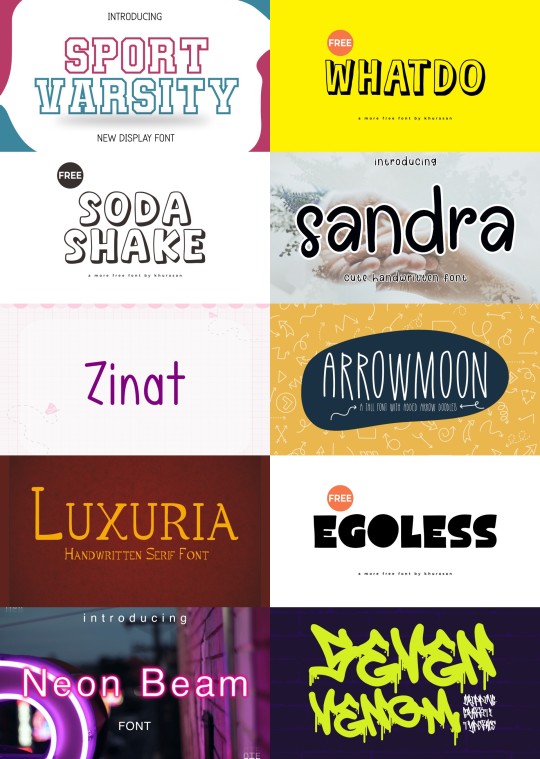
Free Fonts Friday: September 20th
What's free and new the week of September 20th
Full blog post: Free Fonts Friday: September 20th
Fonts in this collection
Sport Varsity
Whatdo
Soda Shake
Sandra
Zinat
Arrowmoon
Luxuria
Egoless
Neon Beam
Seven Venom
#aff#fonts#typeface#font#fontdesign#type#typelove#fontaddict#typeinspiration#typographydesign#typeart#typographic#fontdaily#typographylove
0 notes